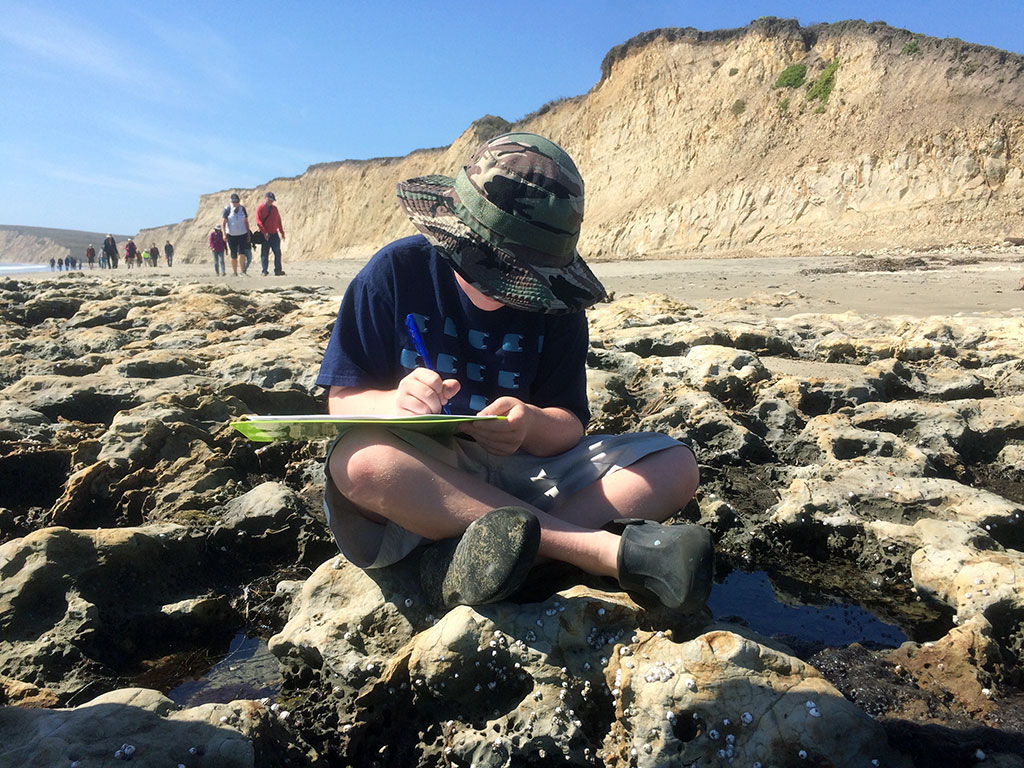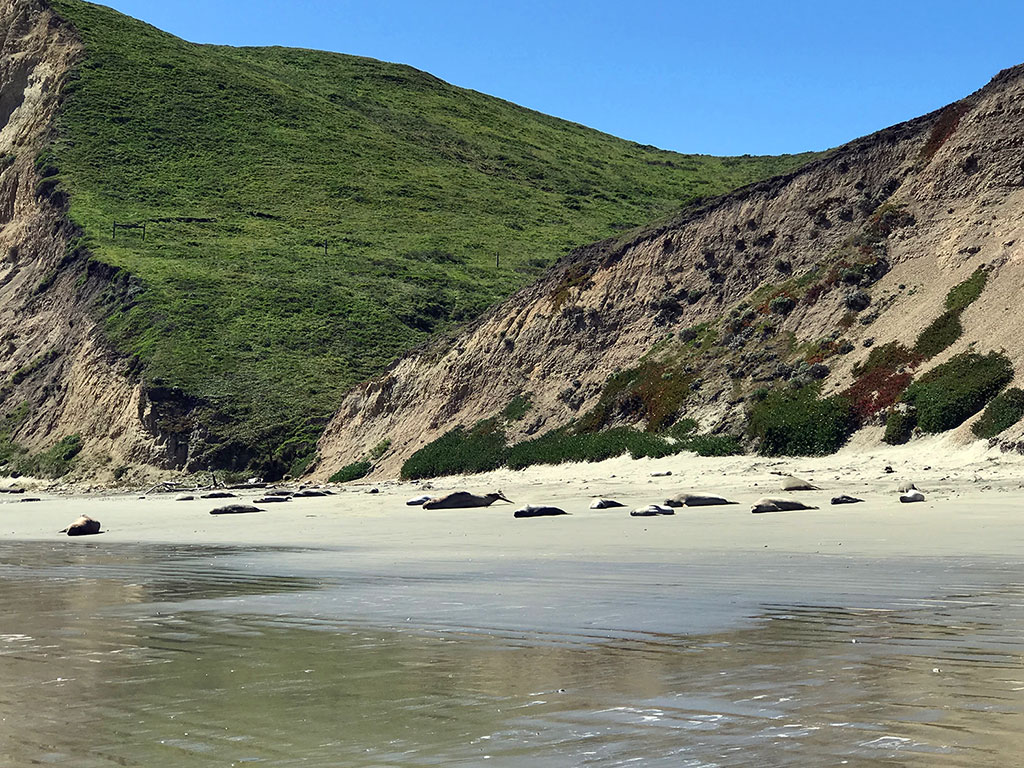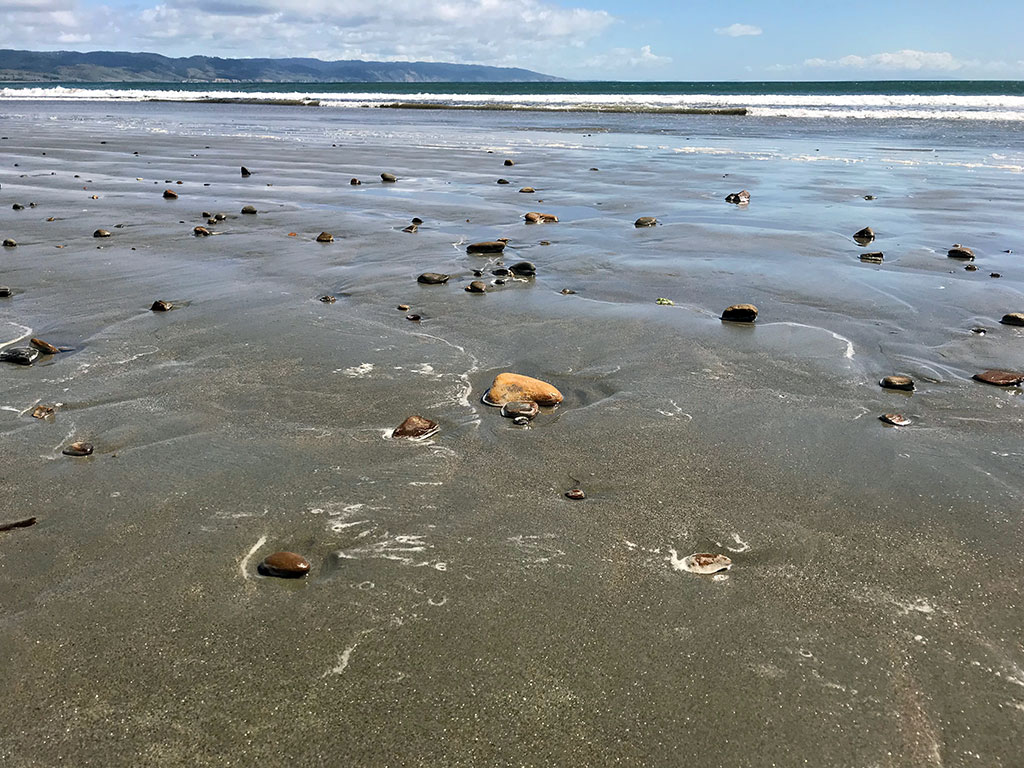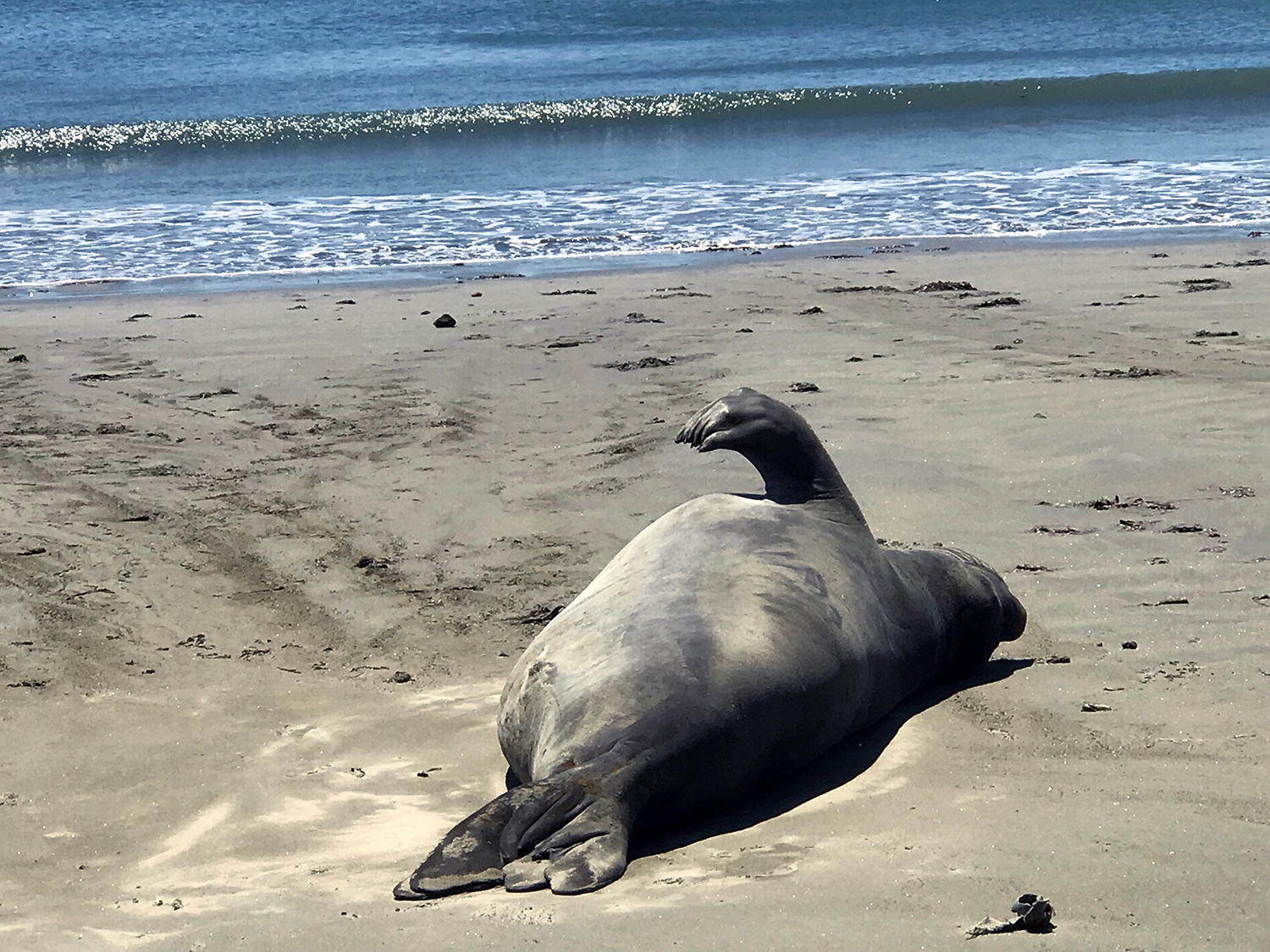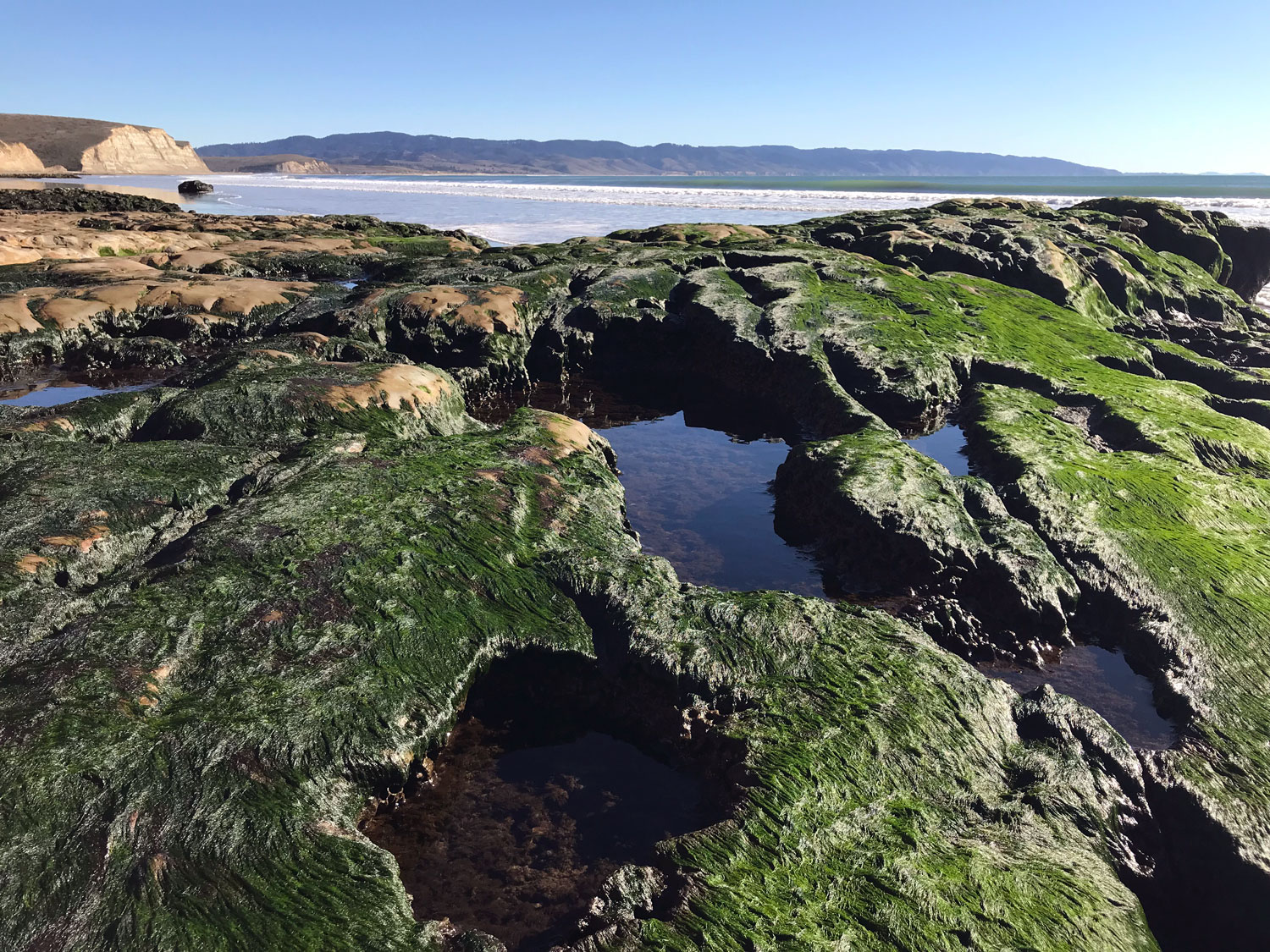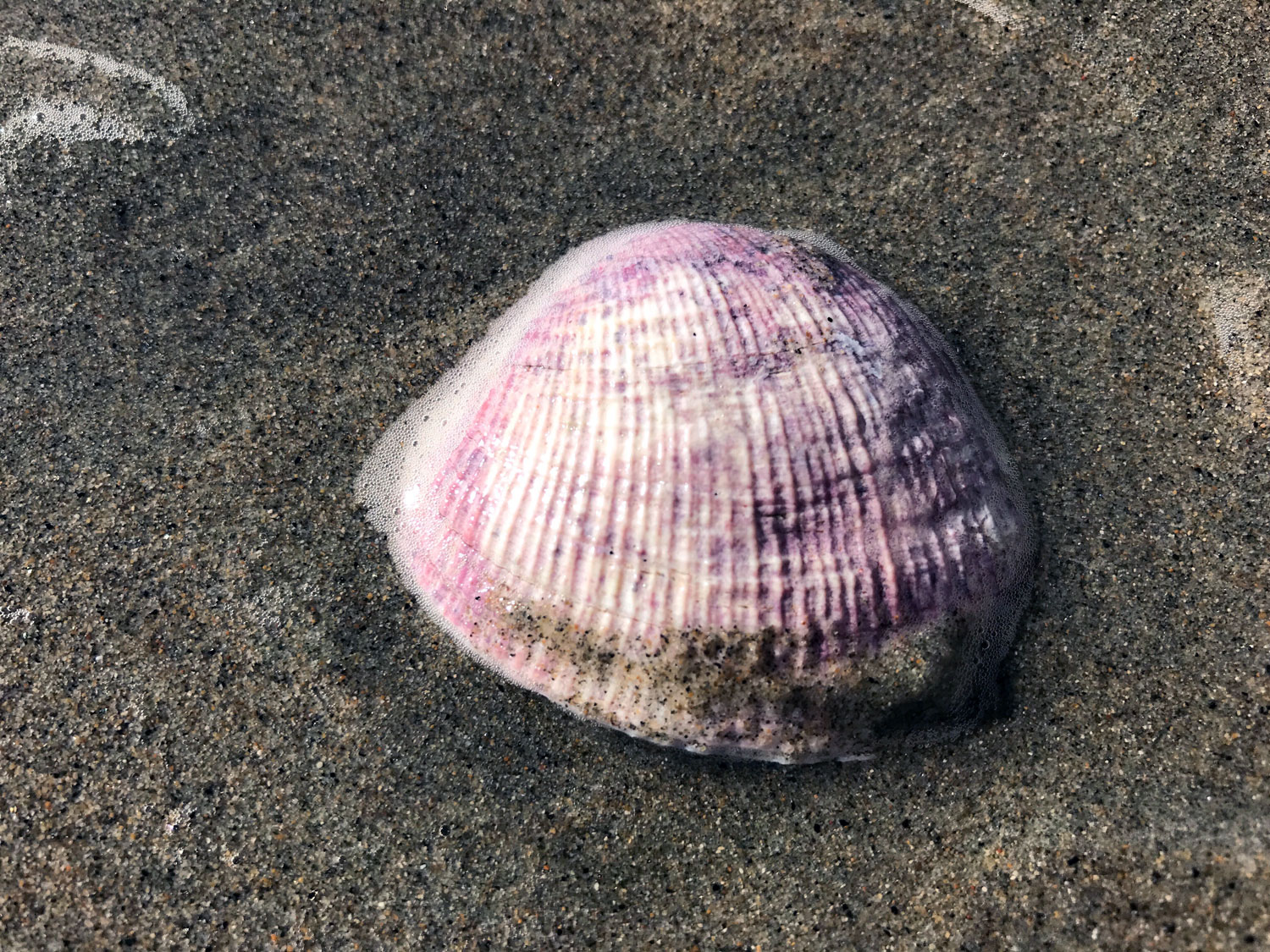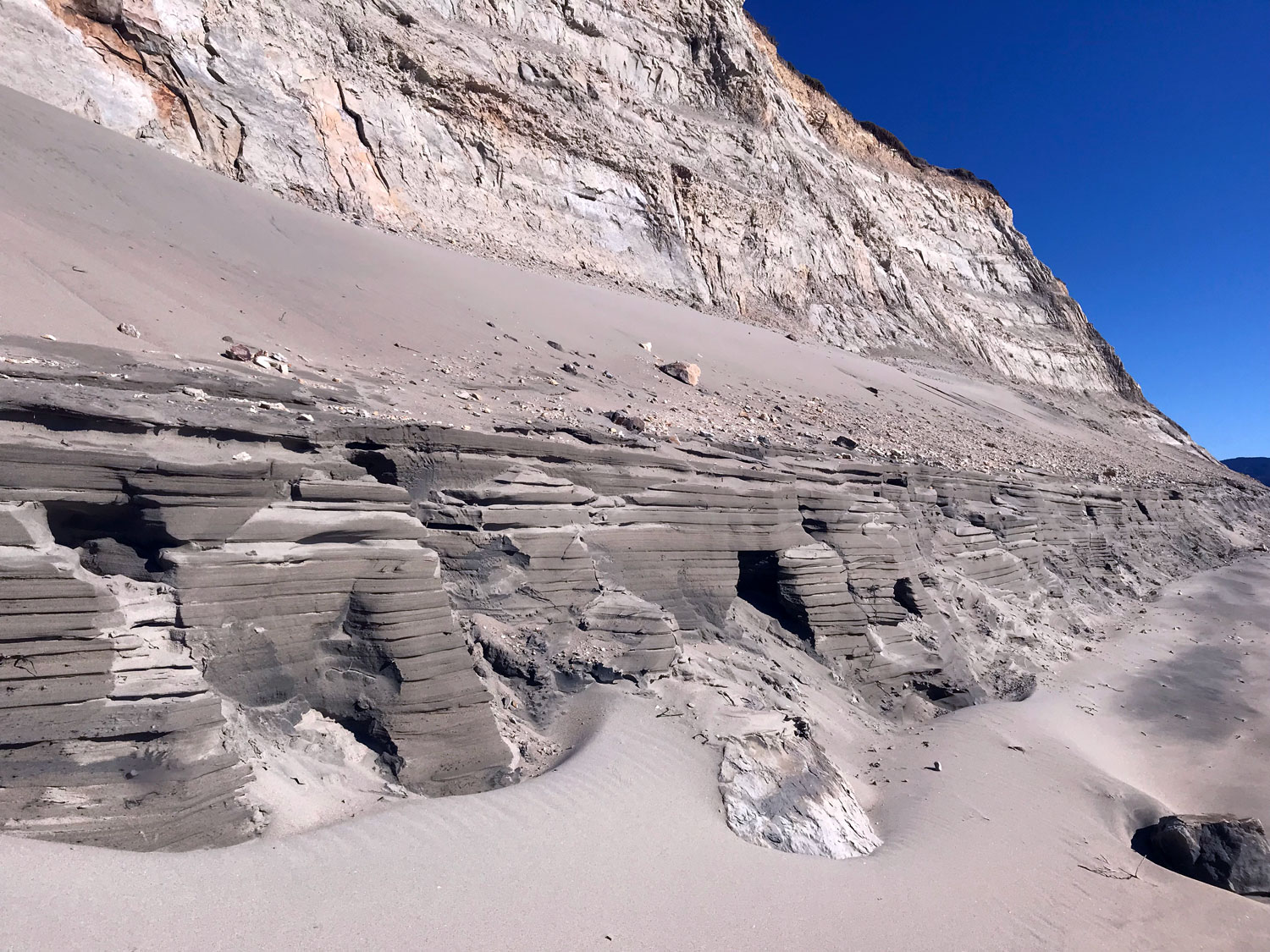Drakes Beach
Time: 45-60 minutes in each direction, east and west
Terrain: sandy beach, steep sandstone cliffs
Restroom? Yes, flush toilets; open 6am to midnight
Parking: large parking lot (free)
Kid friendly? Yes
Favorite plants: pink sand verbena
Favorite spots:
Exploring the rocks at the edge of the tide which are covered in aggregating anemome, barnacles, and other marine life
Visiting the sea dragon-shaped driftwood near the mouth of Drakes Estero
Watching butterflies on the flowering plants in the dunes at the edge of the cliffs and right before the mouth of Drakes Estero
Check tides for Drakes Beach on Tideschart.
A good time to visit Drakes Beach is during the winter and spring when the Northern Elephant Seals are breeding and pupping. The annual sand sculpture contest around Labor Day weekend is the busiest day at the beach.
Venture past the first part of the beach to the truly interesting parts extending east and west. The western edge toward the lighthouse has a narrow band of sand between the water and sheer cliffs so pay attention to the tides. This side has more tide pools and more Northern Elephant Seals, especially at the far western end. The eastern span of Drakes Beach leads to the mouth of Drakes Estero. Butterfly-filled sea rocket and sand verbena plants are prolific as you approach the Estero. The driftwood hut is on this side and nearby are the remains of a small baleen whale, some vertebrae and the head, mostly decayed and not easy to spot. If you are very lucky, you may also spot the driftwood sea dragon between the shore and Drakes Estero.
At the western edge of the parking lot is the trailhead for the Peter Behr Overlook. It's a short 1/4 mile hike to the top of the cliffs with dramatic views to Drakes Beach at the overlook.
Dogs are not allowed on Drakes Beach. (Kehoe Beach and Limantour Beach are two alternatives in Point Reyes that allow dogs on the beach.) Fishing and collecting specimens of any kind such as shells, plants, drift wood is not allowed as this is a Marine Protected Area.
Amenities
Drakes Beach has a seasonal book store run by the Point Reyes National Seashore Association (PRNSA) and a visitor center -- both have limited hours. The bookstore sells maps, hats, books, sweatshirts, and coffee, tea and a few cold beverages and snacks. In the same complex is the Kenneth C. Patrick Visitor Center which houses displays on Sir Francis Drake and 16th century maritime exploration. They also have exhibits on marine fossils and marine environments including a minke whale skeleton.
Geology
Drakes beach has dramatic white sandstone cliffs which are beautiful but take care when picnicking beneath them -- they are eroding and rocks are continually sliding down onto the sand. According to the Point Reyes NPS website: "The sands of the Drakes Bay cliffs were deposited in a shallow sea 10–13 million years ago, compacted, then uplifted. Erosion has revealed the striations of this story in the cliff faces." Don't miss the round bubble shaped rocks on the western end of the beach. I like to think of the small crackled round one (second from the right) as a dinosaur egg. I'm certain it's true geologic history is even more fascinating,
Patterns
If you pay close attention, you will see the intriguing patterns of marine creatures as they forage for food across the wet sand and tidal rocks.
Tide Pools
It’s hard to believe the rocky outcroppings on the beach are completely buried in many feet of sand for months of the year. After the winter storms ravish the beach, the sand covering the rocks is cleared away and marine life returns to these tide pools.
Beach Life
It's relaxing to watch the in and out lapping motion of the tide as you walk along the beach breathing the fresh sea air. If you stop to watch, the beach is filled with constant activity -- bi-valves squirting water, Northern Elephant Seals lounging on the warm sand making themselves comfortable, and sea gulls foraging for crabs and other delights.
Life is good.
Point Reyes Winter Wildlife Docent, Allison Culver captured the happy takeover of Drakes Beach in winter 2019 by Northern Elephant Seals.
Photo: Allison Culver, February 3, 2019, Drakes Beach.
Seaweeds
A myriad of seaweeds wash up on Drakes Beach. I observed most of the seaweeds pictured below in summer but you can find them year round. Seaweed is the common name for marine algae. Marine algae are divided into three groups:
Brown Algae (Phaeophyta) such as kelps, rockweed, and Japanese wireweed
Green Algae (Chlorophyta) such as sea lettuces including gutweed
Red Algae (Rhodophyta) such as Turkish towel, Turkish washcloth, grape tongue, succulent seaweeds, and sea sacks
Although Ostrich-Plume Hydroids look like seaweed (see the last two photos below), they are actually in the animal kingdom. They are in the Hydrozoa class within the Phylum Cnidaria. Sea anemones, corals and jellies are also in the Cnidaria phylum.
How did Drakes Beach get its name?
Volunteer Opportunity: Marine Protected Area (MPA) Watch
“MPAs protect the diversity and abundance of marine life, the habitats they depend on, and the integrity of marine ecosystems. ”
Since August 2017, My son and I have been volunteering as a mother-son team with the Marin Marine Protected Area Watch (Marin MPA Watch) at Drakes Beach. Marine Protected Areas are important, vulnerable coastal waters that have been designated for protection under California State Law. Volunteers do a simple survey of activity on the beach and offshore (using binoculars). I've been surprised by how much illegal activity, especially commercial fishing, happens in the Drakes Beach MPA. Volunteers are vitally important to provide this survey information which informs MPA management and the California Department of Fish and Wildlife.
Using iNaturalist to record the diversity of life I encounter on the beach, I tag it to the "MPA Watch Project". This provides a useful snapshot into what's being protected - at least onshore. The Marin MPA Watch is also interested in how people are using the beach -- surfing, tidepooling, strolling, collecting specimens (which is not allowed at Drakes Beach) and more.
Volunteers provide crucial citizen science data while enjoying a stroll on the beach! It's relaxing, engaging, and it's given me a reason to learn about tides since beach access is limited during high tides. I've had interesting conversations with visitors during my walks, and my young son has brought friends to happily join us on numerous occasions. We always find something that attracts our attention along the way.
Aiden and lena ready to do their mpa watch at drakes beach
If you are interested in volunteering with the Marin MPA Watch, visit the Environmental Action Committee's MPA website.






